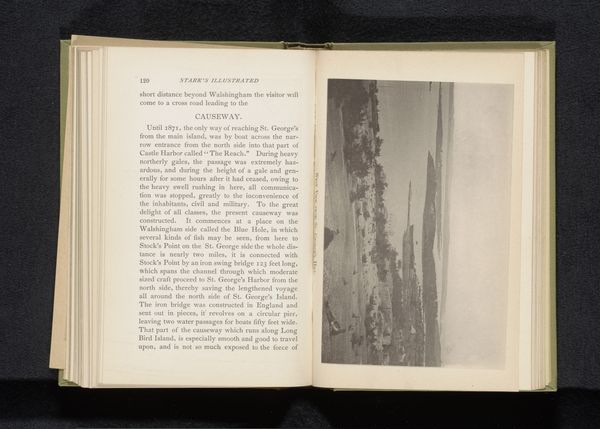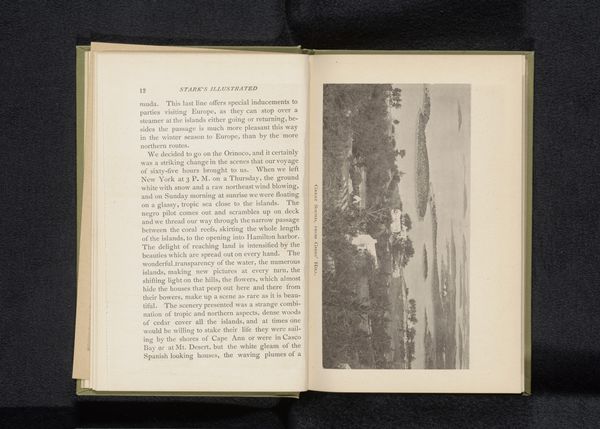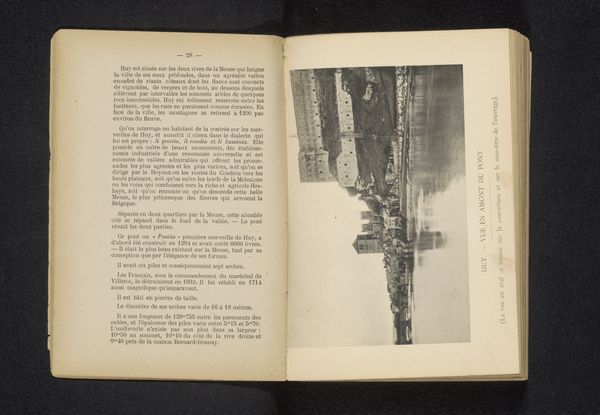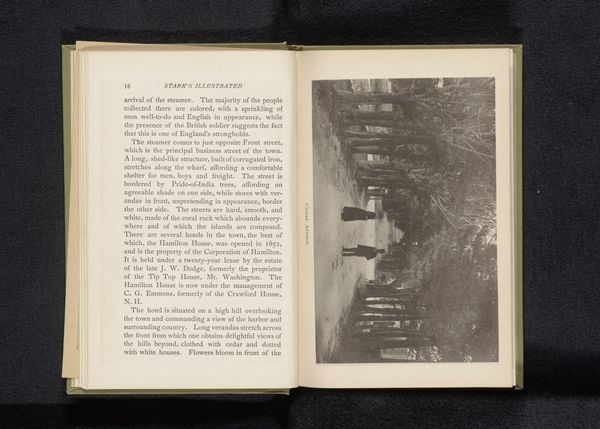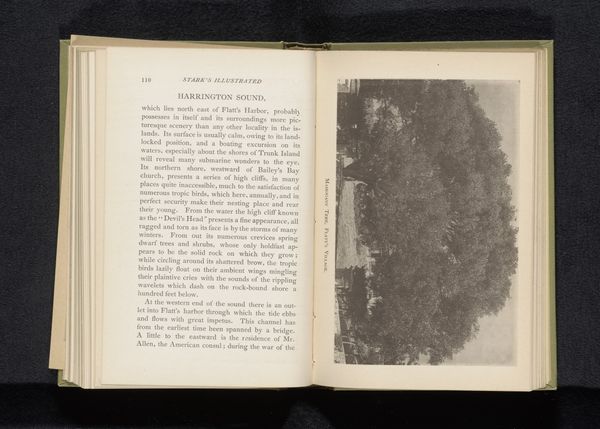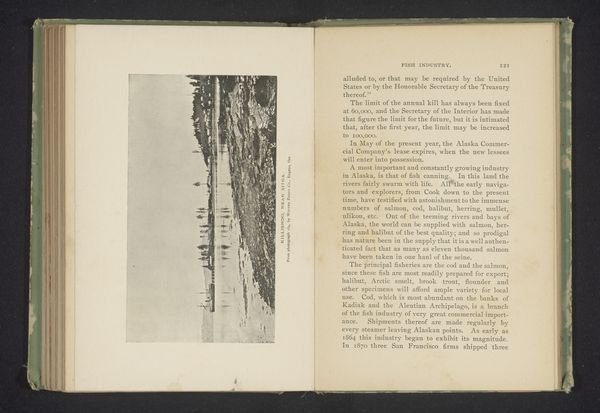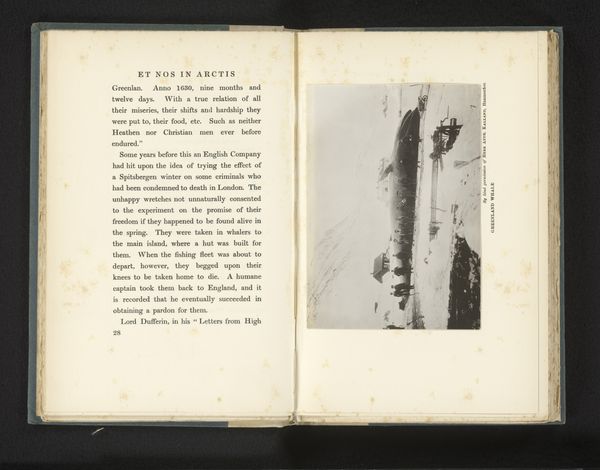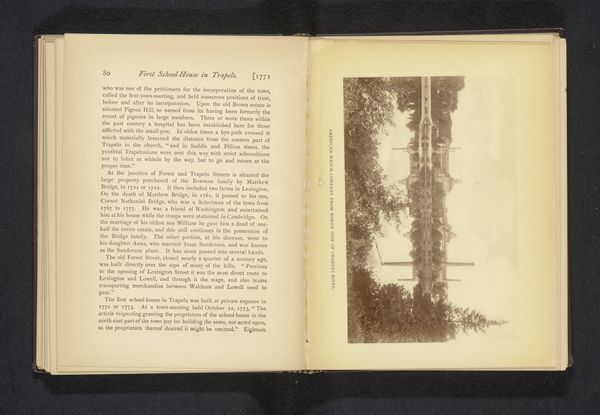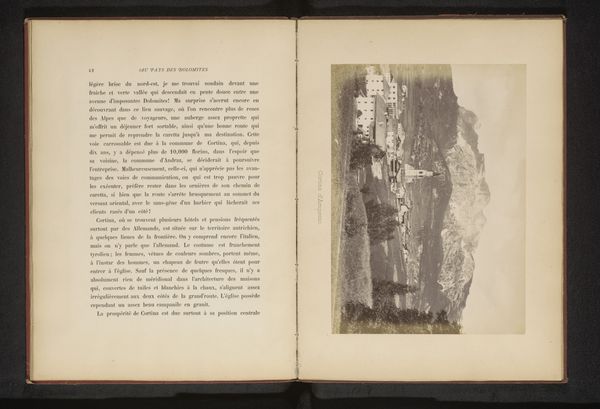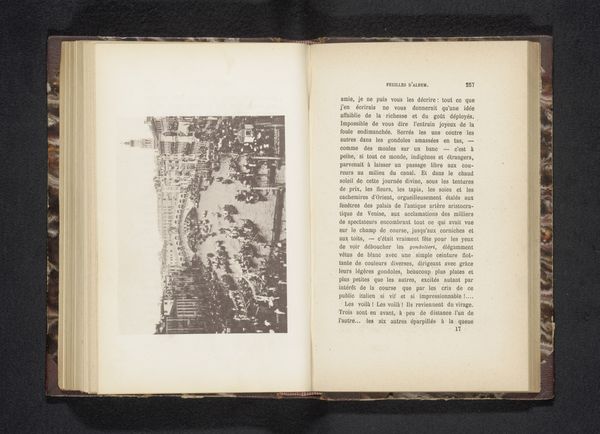
print, photography
# print
#
landscape
#
photography
#
cityscape
Dimensions: height 99 mm, width 152 mm
Copyright: Rijks Museum: Open Domain
Curator: Let’s consider this image, titled "St. George's Island and Ordinance Island," credited to James H. Stark, circa 1884. It's a photograph reproduced as a print in one of Stark’s illustrated books on Bermuda. Editor: My initial impression is that it evokes a sense of maritime stillness. The muted tones create a somewhat solemn atmosphere despite the obviously vibrant natural setting. I am intrigued by the medium's translation—how photography becomes something handled, printed, almost tactile. Curator: Exactly. And we should consider Stark's motivations. These illustrations were designed not just as art, but also as a promotional tool for tourism. Think about the material conditions enabling photography to spread, to enter into printed media that facilitated colonialism. Editor: Right. Stark’s perspective here is vital, because it’s not just an image of two islands, but rather how colonial infrastructures such as fortified harbors function within Bermuda’s societal structure. This picture subtly reveals relationships of control through the composition, even the paper it's printed on speaks volumes. Curator: Precisely! Notice the print quality itself—the labor involved in reproducing it multiple times for mass consumption. This accessibility speaks to a new social function for art, intertwined with commercial interests and the propagation of specific visions of place. Editor: Considering this, does it perhaps depict the beginning of Bermuda as a popularized port? This image may function as historical documentation, which then influences the society that consumes the document. It almost seems the view is meant to legitimize British occupation. Curator: Certainly, the picture actively builds a specific perception of Bermuda. The means by which an object like this shapes culture is very clear. Editor: Agreed. It prompts a look into historical circumstances; how this visual culture influenced or justified power dynamics at the time. Food for thought indeed. Curator: Yes, it moves us past pure aesthetics into a conversation about history, labor and how our world continues to operate.
Comments
No comments
Be the first to comment and join the conversation on the ultimate creative platform.
